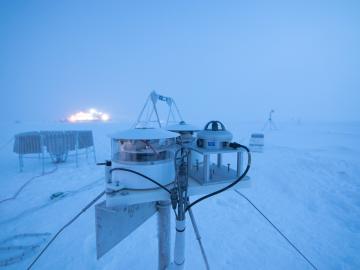
Filter News
Area of Research
- (-) Biological Systems (1)
- (-) Biology and Environment (109)
- (-) Fusion Energy (15)
- (-) Neutron Science (46)
- (-) Quantum information Science (2)
- Advanced Manufacturing (7)
- Biology and Soft Matter (1)
- Computational Biology (2)
- Computational Engineering (2)
- Computer Science (3)
- Electricity and Smart Grid (1)
- Energy Science (92)
- Functional Materials for Energy (1)
- Fusion and Fission (26)
- Isotope Development and Production (1)
- Isotopes (28)
- Materials (110)
- Materials Characterization (1)
- Materials for Computing (16)
- Materials Under Extremes (1)
- Mathematics (1)
- National Security (29)
- Nuclear Science and Technology (23)
- Supercomputing (66)
- Transportation Systems (1)
News Topics
- (-) Biomedical (30)
- (-) Cybersecurity (3)
- (-) Environment (99)
- (-) Fusion (16)
- (-) Isotopes (2)
- (-) Materials Science (30)
- (-) Molten Salt (1)
- (-) Space Exploration (3)
- 3-D Printing/Advanced Manufacturing (16)
- Advanced Reactors (9)
- Artificial Intelligence (14)
- Big Data (11)
- Bioenergy (55)
- Biology (78)
- Biotechnology (14)
- Buildings (2)
- Chemical Sciences (15)
- Clean Water (13)
- Composites (5)
- Computer Science (39)
- Coronavirus (20)
- Critical Materials (1)
- Energy Storage (13)
- Exascale Computing (4)
- Fossil Energy (1)
- Frontier (5)
- Grid (4)
- High-Performance Computing (22)
- Hydropower (9)
- Machine Learning (11)
- Materials (26)
- Mathematics (4)
- Mercury (7)
- Microscopy (15)
- Nanotechnology (18)
- National Security (5)
- Neutron Science (120)
- Nuclear Energy (14)
- Partnerships (6)
- Physics (12)
- Polymers (3)
- Quantum Computing (1)
- Quantum Science (16)
- Security (4)
- Simulation (15)
- Summit (16)
- Transportation (8)
Media Contacts

Six ORNL scientists have been elected as fellows to the American Association for the Advancement of Science, or AAAS.

Seven ORNL scientists have been named among the 2020 Highly Cited Researchers list, according to Clarivate, a data analytics firm that specializes in scientific and academic research.

NellOne Therapeutics has licensed a drug delivery system from the Department of Energy’s Oak Ridge National Laboratory that is designed to transport therapeutics directly to cells infected by SARS-CoV-2, the virus causing COVID-19.

Researchers at Oak Ridge National Laboratory were part of an international team that collected a treasure trove of data measuring precipitation, air particles, cloud patterns and the exchange of energy between the atmosphere and the sea ice.

Scientists from Oak Ridge National Laboratory used high-performance computing to create protein models that helped reveal how the outer membrane is tethered to the cell membrane in certain bacteria.

Pauling’s Rules is the standard model used to describe atomic arrangements in ordered materials. Neutron scattering experiments at Oak Ridge National Laboratory confirmed this approach can also be used to describe highly disordered materials.

To better understand how the novel coronavirus behaves and how it can be stopped, scientists have completed a three-dimensional map that reveals the location of every atom in an enzyme molecule critical to SARS-CoV-2 reproduction.

New capabilities and equipment recently installed at the Department of Energy’s Oak Ridge National Laboratory are bringing a creek right into the lab to advance understanding of mercury pollution and accelerate solutions.

Popular wisdom holds tall, fast-growing trees are best for biomass, but new research by two U.S. Department of Energy national laboratories reveals that is only part of the equation.

Two scientists with the Department of Energy’s Oak Ridge National Laboratory have been elected fellows of the American Physical Society.


